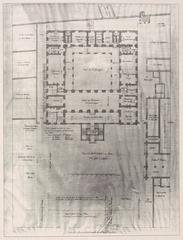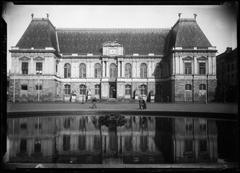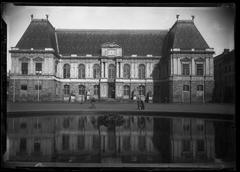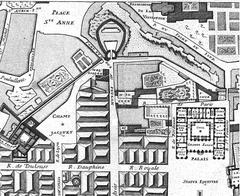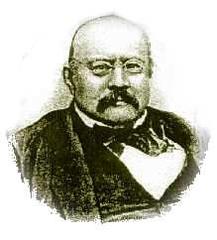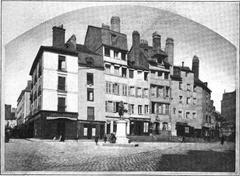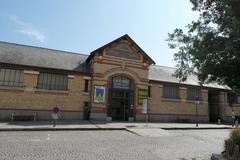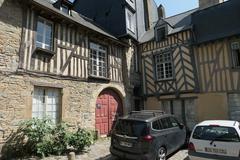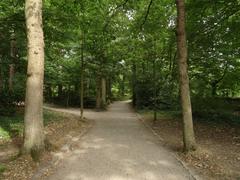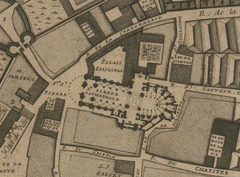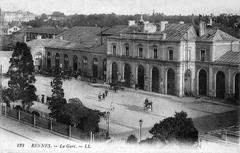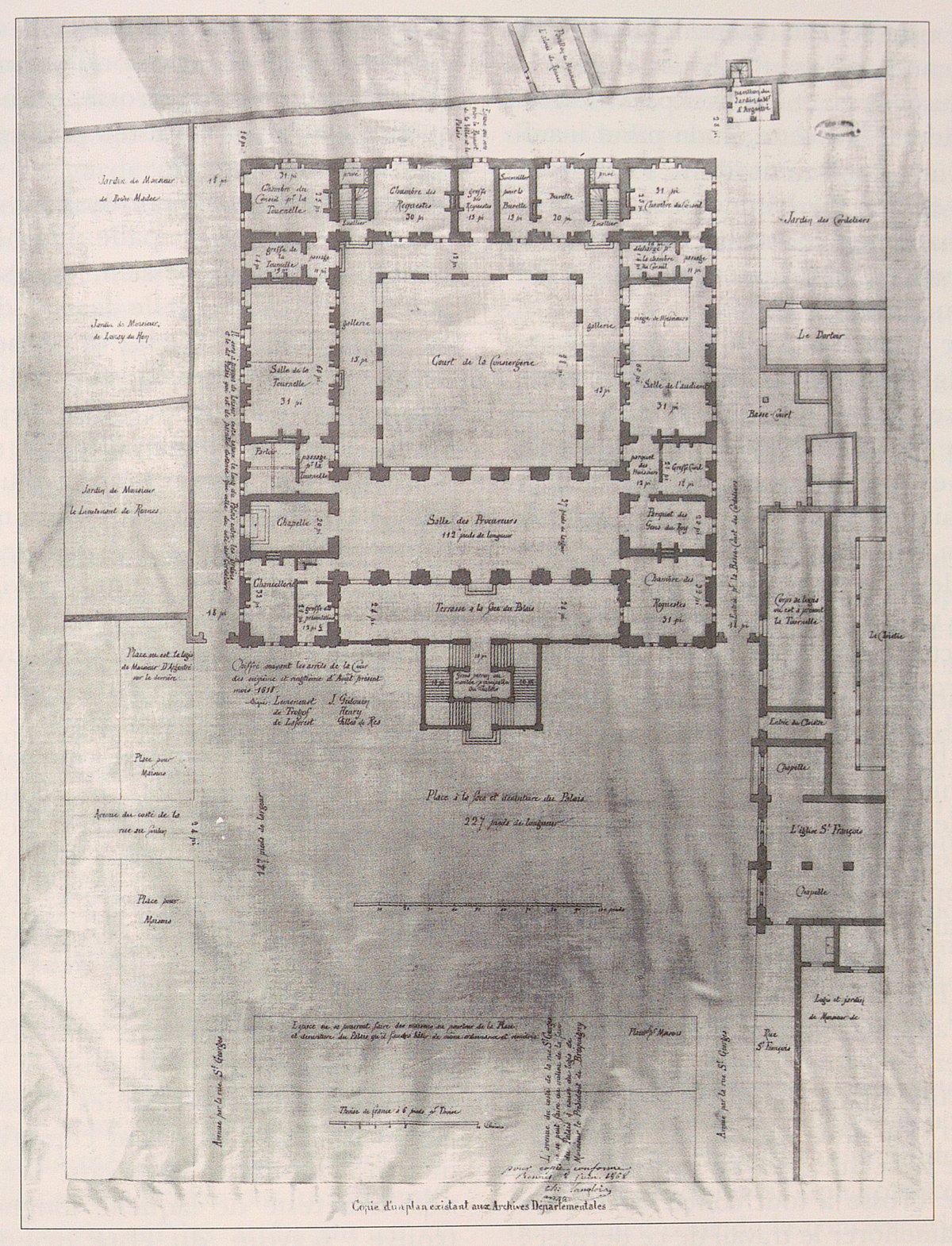
Visiting Parlement de Bretagne: Hours, Tickets, and Tips
Published Date: 25/07/2024
Introduction to Parlement de Bretagne
Nestled in the vibrant city of Rennes, France, the Parlement de Bretagne stands as a monumental testament to both the judicial and cultural history of Brittany. This magnificent edifice, constructed between 1618 and 1655, has witnessed centuries of political, judicial, and architectural evolution (infrance.wiki). Originally designed by the esteemed French architect Salomon de Brosse, the Parlement de Bretagne was intended to serve as the seat of the Parliament of Brittany, one of the nine sovereign courts of the Ancien Régime, established in 1554 by King Henry II of France (voyagetips.com). The building’s grandeur, reflected in its intricate carvings and opulent interiors, symbolizes the power and influence wielded by the Parliament during its prime. Today, the Parlement de Bretagne not only continues to serve as a center of justice but also attracts visitors from around the globe who are eager to delve into its rich historical and cultural heritage. This guide aims to provide a comprehensive overview of the Parlement de Bretagne’s historical significance, visitor information, travel tips, and nearby attractions to ensure an enriching and memorable visit.
Table of Contents
- Introduction
- Historical Background
- Visitor Information
- Modern-Day Significance
- Visitor Tips
- FAQs
- Conclusion
Historical Background
Origins and Construction
The Parlement de Bretagne, or the Palace of the Parliament of Brittany, is a significant historical and architectural landmark located in Rennes. The construction of this majestic edifice began in 1618 and was completed in 1655. The palace was designed by Salomon de Brosse, a renowned French architect who also designed the Luxembourg Palace in Paris. The building was intended to serve as the seat of the Parliament of Brittany, a sovereign court that played a crucial role in the administration of justice and the political landscape of the region (infrance.wiki).
Role in the Administration of Justice
The Parliament of Brittany was established in 1554 by King Henry II of France. It was one of the nine sovereign courts of the Ancien Régime, which were responsible for administering justice and overseeing the implementation of royal edicts in their respective regions. The Parliament of Brittany held significant power and influence, often acting as a counterbalance to the authority of the king. It had the authority to register and publish royal edicts, which gave it the power to delay or even block the implementation of certain laws (voyagetips.com).
Architectural Significance
The architectural design of the Parlement de Bretagne reflects the grandeur and opulence of the 17th century. The building’s grand facade is adorned with intricate carvings and sculptures, symbolizing the power and influence wielded by the Parliament. The interior of the palace is equally impressive, featuring elegant chambers, ornate fireplaces, and a grand staircase that sweeps visitors back in time. The Grand Hall, in particular, is a testament to the building’s historical significance. This grand chamber served as the stage for pivotal trials and assemblies that shaped the course of history (infrance.wiki).
Notable Historical Events
One of the most notable events that took place within the walls of the Parlement de Bretagne was the trial of the Comte de Lally-Tollendal in 1766. The Comte de Lally-Tollendal was a French general accused of treason during the Seven Years’ War. His trial drew immense public attention and remains a poignant reminder of the hall’s enduring legacy. The Grand Hall also hosted official ceremonies and public gatherings, further solidifying its role as a central hub of power and decision-making (infrance.wiki).
Transformation and Restoration
The Parlement de Bretagne continued to serve as the seat of the Parliament of Brittany until the French Revolution in 1790. After the revolution, the building was repurposed to serve as a court of law. In 1994, the palace was severely damaged by a fire, which destroyed much of its interior. However, a meticulous restoration project was undertaken to restore the building to its former glory. Today, the Parlement de Bretagne houses the Appeal Court of Brittany and the Assizes Court of Ille-et-Vilaine, continuing its legacy as a center of justice (voyagetips.com).
The Chapel
Located within the Palace of the Parliament of Brittany, the chapel holds a significant place in the history and architecture of the building. Adorned with intricate stained glass windows, a vaulted ceiling, and delicate carvings, the chapel exudes an aura of grandeur and spirituality. Originally serving as a place of worship for the members of the Parliament, the chapel played a crucial role in the religious life of the palace. Over the centuries, it witnessed numerous historical events, ceremonies, and gatherings, adding to its symbolic value (infrance.wiki).
The Exhibition Hall
The exhibition hall within the Palace of the Parliament of Brittany takes visitors on a journey through the history of the palace, the Parliament of Brittany, and the region. Interactive displays, multimedia presentations, and historical artifacts bring the past to life, immersing visitors in the rich tapestry of the palace’s legacy. Thematic zones within the exhibition hall focus on specific aspects of the palace’s history and significance. Visitors can explore the origins of the Parliament of Brittany, learn about the judicial processes and landmark trials that took place within the palace walls, and discover the role of the parliament in shaping the political and social landscape of the region (infrance.wiki).
Visitor Information
Tickets and Opening Hours
Visitors can purchase tickets at the Tourist Information Office located at 11 Rue Saint-Yves, Rennes. The office organizes guided tours of the palace, providing valuable insights into its history and significance. It is recommended to check the official website for the most up-to-date information on ticket prices and visiting hours.
Travel Tips and Accessibility
The Parlement de Bretagne is located in the city center, making it easily accessible by public transport. There are several nearby attractions, including the Rennes Cathedral and the Thabor Gardens, that can be included in your visit. The palace is accessible to visitors with disabilities, with wheelchair ramps, elevators, and adapted restrooms ensuring a comfortable and inclusive experience for all.
Nearby Attractions
While in Rennes, visitors can also explore other historical sites such as the Rennes Cathedral, the Thabor Gardens, and the Musée des Beaux-Arts. These attractions offer a deeper understanding of the region’s rich cultural and historical heritage.
Modern-Day Significance
Today, the Parlement de Bretagne stands as a symbol of Brittany’s unique identity and its enduring legacy. It continues to attract visitors from around the world who are captivated by its rich history and architectural splendor. Guided tours are available in various languages, offering a comprehensive overview of the palace’s past and significance. Visitors can also choose to explore the palace independently, allowing them to wander at their own pace and discover hidden corners (infrance.wiki).
Visitor Tips
For those planning to visit the Parlement de Bretagne, it is recommended to start at the Tourist Information Office. The visit allows you to admire the most famous room of the Parliament, the Grand’Chambre, with its unique sculpted gilded wood paneling and painted canvases. Additionally, make sure to check out special events and guided tours that may be available during your visit (voyagetips.com).
FAQs
What are the opening hours of the Parlement de Bretagne?
The opening hours vary, so it is best to check the official website for the most current information.
How much do tickets cost?
Ticket prices can be found on the official website or at the Tourist Information Office.
Is the Parlement de Bretagne accessible for visitors with disabilities?
Yes, the palace is equipped with wheelchair ramps, elevators, and adapted restrooms.
Are guided tours available?
Yes, guided tours are available in various languages and can be booked through the Tourist Information Office.
Conclusion
In conclusion, the Parlement de Bretagne is not just a historical monument but a living testament to the rich history and cultural heritage of Brittany. Its architectural grandeur, historical significance, and modern-day relevance make it a must-visit destination for anyone exploring the vibrant city of Rennes. Don’t miss out on the opportunity to immerse yourself in this captivating piece of history. For more information, download our mobile app Audiala, check out related posts, or follow us on social media for the latest updates.
References and Further Reading
- infrance.wiki. (n.d.). Parlement de Bretagne - Palace of the Parliament of Brittany. Retrieved from infrance.wiki
- voyagetips.com. (n.d.). Things to do in Rennes. Retrieved from voyagetips.com
- Tourisme Rennes. (n.d.). Lumières Parlement. Retrieved from tourisme-rennes.com
- France Voyage. (n.d.). Palace of the Parliament of Brittany. Retrieved from france-voyage.com
- Lonely Planet. (n.d.). Palais du Parlement de Bretagne. Retrieved from lonelyplanet.com
- Maville Rennes. (n.d.). En images. A Rennes le Parlement de Bretagne se transforme la nuit en palais des sports. Retrieved from rennes.maville.com
- Facts.net. (n.d.). 37 Facts About Rennes. Retrieved from facts.net
